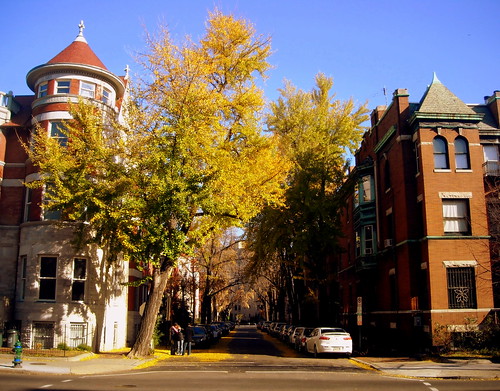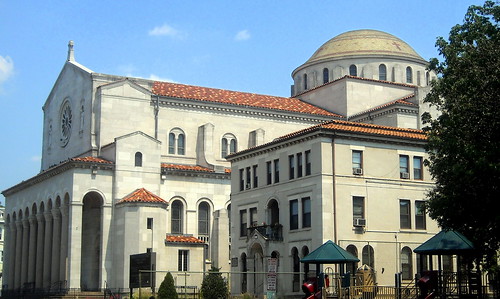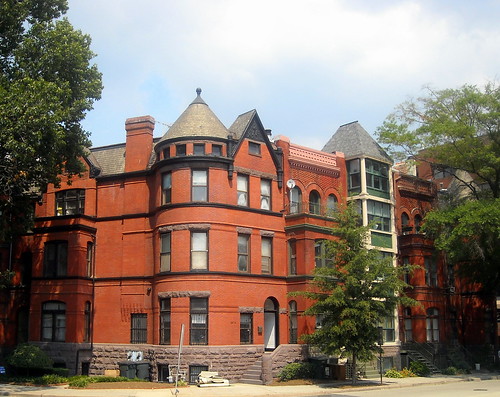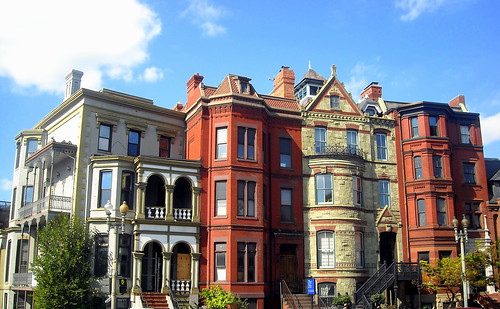
‘a hug on Riggs’
courtesy of ‘NCinDC’
Welcome to Where We Live: Dupont! Dupont Circle is one of the District’s best-known neighborhoods, and there’s so much history and beautiful architecture to love here. Dupont is home to everyone from recent grads in group houses to young professionals in condos to well-off diplomats with kids, and yes, even some new stars. I know I’m probably supposed to be unbiased in my descriptions of all these neighborhoods, but to be honest, Dupont’s my favorite. Read on to find out why.
History: Not much was really going on in the Dupont area until the Civil War. Up until then it was a rural backwater, but a massive modernization program built streets and sewers in the 1870s, making the area a fashionable new residential district. In 1871, the circle itself (then known as Pacific Circle) was constructed, and in 1882 Congress decided to use the circle to honor Civil War admiral Samuel Francis Du Pont. A statue of Du Pont was erected in 1884, and replaced in 1921 with the fountain that we all know and love today. The traffic signals in the circle were added in 1948 to make it easier for pedestrians to cross, and in 1949 the Connecticut Avenue tunnel was built to separate thru traffic and build a streetcar station.
By the 1870s and 1880s, impressive mansions were built along Massachusetts Avenue, and Connecticut Avenue had more shops and offices. Much of the area was developed with rowhouses, many of which remain today. The neighborhood began to decline after the 1968 riots, but in the 1970s some urban pioneersmoved in. Dupont Circle took on more of a Bohemian character, and the area became a gay enclave. It is considered the historic center of the gay communityin DC, though many of those original urban pioneers later moved on to Logan Circle or Shaw. The 1980s and 1990s saw more reinvestment in the neighborhood, and today Dupont Circle is again one of DC’s most desired neighborhoods.





